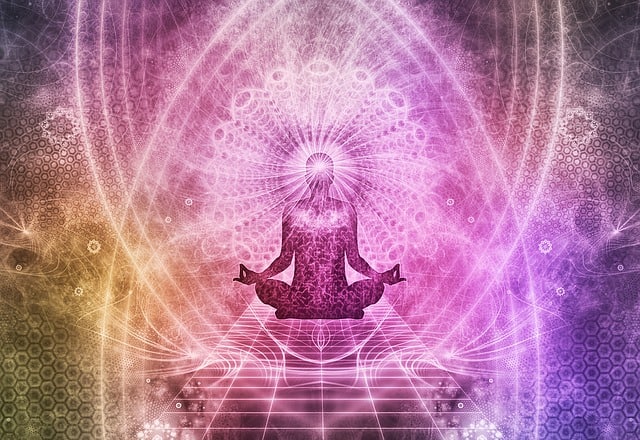Third Eye Meditation Vs. Other Meditation Styles: a Comparative Analysis

Are you curious about the differences between third eye meditation and other meditation styles? In this article, we will delve into a comparative analysis of these practices.
Discover the origins and history of third eye meditation, gain an understanding of various meditation styles, and explore the unique benefits of third eye meditation.
We will also discuss techniques and practices found in other meditation styles and how they differ from the focus and objectives of third eye meditation.
Get ready to incorporate third eye meditation into your existing practice!
Key Takeaways
- Third eye meditation focuses on activating the third eye chakra and enhancing intuition and inner wisdom.
- Other meditation styles such as mindfulness and loving-kindness meditation offer unique benefits and approaches, including self-awareness, relaxation, and present-moment focus.
- Third eye meditation differs from mindfulness or loving-kindness meditation as it aims to cultivate self-awareness, inner peace, and a deeper connection with the higher self.
- Integrating third eye meditation into an existing meditation practice can deepen spiritual connection, enhance intuition, and allow trust in inner guidance and higher levels of consciousness.
The Origins and History of Third Eye Meditation
Third eye meditation has its roots in ancient Eastern spiritual practices. Its origins can be traced back to ancient Hindu and Buddhist traditions. It was believed that the third eye, or the inner eye, is the gateway to higher consciousness and spiritual enlightenment. This meditation technique holds great significance as it focuses on activating and awakening the dormant energy within the sixth chakra, also known as the third eye chakra.
By directing your attention to the space between the eyebrows, you can tap into your intuition, enhance your perception, and gain deeper insight into yourself and the world around you. Third eye meditation allows you to access higher states of awareness, expand your consciousness, and cultivate a sense of inner peace and clarity.
It has become increasingly popular in modern times as people seek to find balance and connect with their inner selves.
Understanding Different Meditation Styles
To better understand various meditation practices, you can explore different styles and their unique techniques. Each style offers its own benefits and approaches to achieving a calm and focused state of mind.
Here are three popular meditation styles to consider:
- Mindfulness Meditation: This style focuses on being fully present in the moment and observing your thoughts and sensations without judgment. It can help increase self-awareness and reduce stress.
- Loving-Kindness Meditation: This technique involves cultivating feelings of love, kindness, and compassion towards oneself and others. It can promote feelings of connection and empathy.
- Transcendental Meditation: This method uses a mantra or sound to help the mind settle into a state of deep relaxation and inner peace. It aims to access a transcendent state of consciousness.
Exploring the Benefits of Third Eye Meditation
One of the benefits of exploring the practice of third eye meditation is that it can enhance your intuition and inner wisdom. By focusing on your third eye, which is located between your eyebrows, you can tap into a deeper level of consciousness and gain insight into your own intuition.
This form of meditation is believed to activate the pineal gland, which is associated with spiritual awakening and heightened intuition. Additionally, third eye meditation can help improve your concentration and focus. As you train your mind to stay focused on your third eye, you develop the ability to maintain mental clarity and remain present in the moment.
This can be especially beneficial in today’s fast-paced world, where distractions are abundant and our attention spans are constantly tested.
Techniques and Practices in Other Meditation Styles
Another technique that is popular in meditation is mindfulness, which involves paying attention to the present moment without judgment. It is a powerful tool that can help you cultivate a sense of inner peace and clarity.
Here are some mindfulness techniques and visualization exercises that can enhance your meditation practice:
- Body scan: Slowly scan your body from head to toe, noticing any sensations or areas of tension. This helps you become more aware of your physical body and promotes relaxation.
- Breath awareness: Focus your attention on your breath, observing the inhales and exhales without trying to change them. This helps calm the mind and anchor you in the present moment.
- Visualize a peaceful place: Imagine yourself in a serene and tranquil environment, such as a beach or a forest. Engage your senses and bring this image to life in your mind, creating a sense of calm and relaxation.
Comparing the Focus and Objectives of Third Eye Meditation and Other Styles
Discover how the focus and objectives of third eye meditation differ from various other meditation styles.
In third eye meditation, the main focus is on activating and opening the sixth chakra, also known as the third eye. This technique involves concentrating on the space between your eyebrows, visualizing a vibrant indigo light, and connecting with your intuition.
Unlike other styles, such as mindfulness or loving-kindness meditation, third eye meditation aims to enhance spiritual insight, intuition, and psychic abilities. It is believed to provide clarity, enhance creativity, and facilitate spiritual growth.
However, common misconceptions about third eye meditation include thinking it is solely about seeing visions or having supernatural experiences. In reality, it is a practice that cultivates self-awareness, inner peace, and a deeper connection with the higher self.
Integrating Third Eye Meditation Into Your Existing Meditation Practice
Integrating third eye meditation into your existing practice can deepen your spiritual connection and enhance your intuition. By focusing your attention on the third eye, located between your eyebrows, you can enhance your ability to concentrate and sharpen your focus.
This form of meditation allows you to tap into your inner wisdom and connect with your higher self, resulting in a deeper spiritual connection. Additionally, third eye meditation can help you access higher levels of consciousness and expand your awareness beyond the physical realm. It can also enhance your intuition, allowing you to trust your inner guidance and make decisions with greater clarity.
Frequently Asked Questions
Can Third Eye Meditation Help Improve My Physical Health?
Yes, third eye meditation can help improve your physical health. It has numerous benefits for your physical well-being, such as reducing stress, boosting the immune system, and promoting overall balance and harmony in the body.
Is Third Eye Meditation Suitable for Beginners or Is It More Advanced?
Third Eye Meditation is suitable for both beginners and advanced practitioners. It offers a unique focus on the third eye chakra and can be adapted to different skill levels.
Are There Any Potential Side Effects or Risks Associated With Third Eye Meditation?
There are potential side effects and risks associated with third eye meditation. It’s important to be aware of these before starting. Make sure to research and consult with a professional to ensure your safety.
Can Third Eye Meditation Be Practiced Without a Spiritual or Religious Belief?
Yes, you can practice third eye meditation without a spiritual or religious belief. It focuses on enhancing intuition and self-awareness. By using specific techniques, such as visualization and breath control, you can experience the benefits of third eye meditation.
How Long Does It Typically Take to Experience the Benefits of Third Eye Meditation?
It usually takes time to experience the benefits of third eye meditation. Don’t fall for common misconceptions that it’s a quick fix. Stay consistent and patient, and eventually, you’ll start reaping the rewards.









